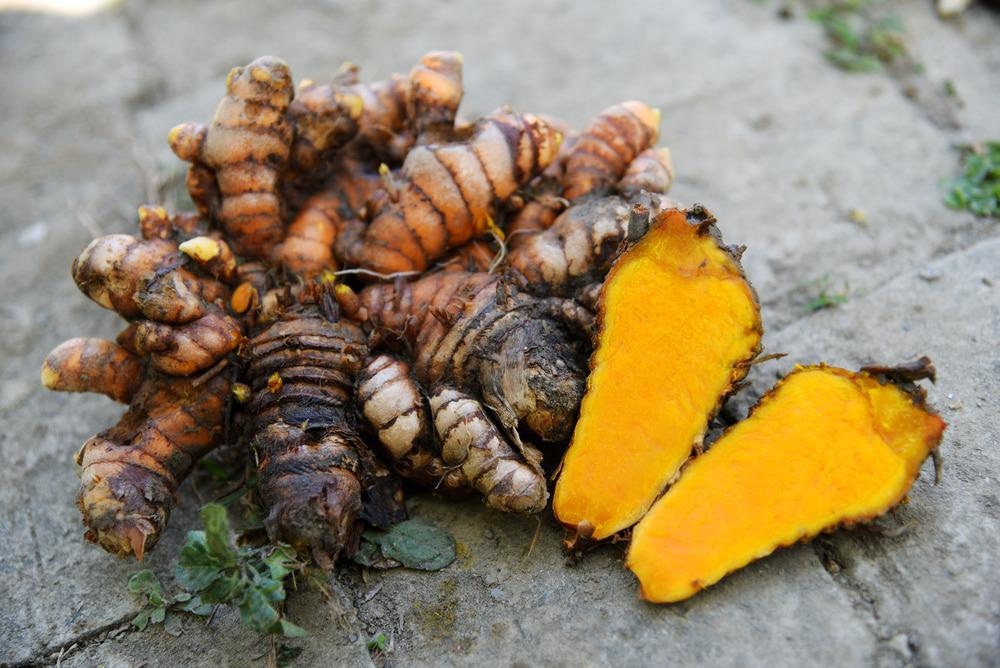Curcumin, abbreviated CM, is a natural substance found in the Turmeric plant. It possesses various pharmaceutical advantages such as antioxidant, anti-inflammatory, and antibacterial properties. Additionally, its chemical structure makes it suitable for polymer formation, a key function within the plastic production process. Thus, curcumin is an ideal sample material to study in the synthesis of alternatives to BPA, a toxic precursor used when making plastics.

Image Credit: Man-Zu/Shutterstock.com
BPA, or bisphenol A, has certain detrimental health effects as an endocrine disruptor. The correlation between BPA and adverse conditions such as cancer, infertility, diabetes, and obesity are a major study topic in the health and chemical engineering fields. Additionally, the present-day manufacturing of plastics contributes to environmental degradation, with hundreds of thousands of tons of microplastics polluting natural habitats around the world.
In efforts toward sustainability and a circular economy model, researchers from the University of Bari, Italy, synthesized a renewable alternative to BPA using curcumin as a precursory material to form polycarbonates for plastic.
Synthesizing Renewable Alternatives to BPA
The Italian research team aimed to fabricate a novel bio-based polycarbonate that will replace toxic BPA from plastics. To do this, the scientists developed a two-step procedure to create this reusable polycarbonate alternative. First, BPA polycarbonates were depolymerized to produce the intermediate diphenyl carbonate.
Second, the team performed melt transesterification on diphenyl carbonate using curcumin (CM) and its tetrahydrogenated form (THCM), resulting in the bio-based polycarbonates CM-PC and THCM-PC. THCM was also used as a monomer in the polycarbonate synthesis process because it possesses the chemical structure of CM that is a suitable synthetic equivalent to BPA but does not boast CM’s less desirable saturated yellow color.
Furthermore, analysis of polymerization reactions, molecular characteristics, and optical properties was performed on each resulting polycarbonate using a variety of advanced laboratory methods. Alongside high-performance thin layer chromatography and gel permeation chromatography, a diverse range of spectra analysis was conducted on CM-PC and THCM-PC by the research team.
In particular, the investigators performed nuclear magnetic resonance (NMR) to analyze the molecular structure of their synthesized products, employing the Bruker (Billerica, MA, USA) 500 MHz spectrometer. NMR was also used in the intermediate stage to confirm that unconjugated carbonyls were present after tetra hydrogenating CM to form THCM. The obtained spectra from CM-PC and THCM-PC were analyzed with considerations to residual isotopic impurity. Characterizing the resulting polymers using 1H-NMR spectroscopy in conjunction with UV-Vis-NIR and IR spectroscopy gave a more cohesive image of each as a potential solution to the production of BPA. Results showed successful polymerization rates in both CM-PC and THCM-PC.
Curcumin Holds Potential as an Eco-Friendly Building Block of Plastic Production
What this study accomplished is transforming the plastic waste BPA-PC into natural analogous polymers via the process of trans-polymerization. BPA is thus replaced with monomers that are clean, renewable and not toxic. Furthermore, these polycarbonates can be reprocessed and reused, allowing for BPA to be recovered with a high purity for further transformation again. This cycle of chemical recycling is valuable to establishing a more sustainable plastic production process.
The researchers at the University of Bari concede that this synthesis procedure using curcumin is costly, however, it can be lowered to more economical prices with support from political and social entities. The scientists are proponents for increased environmental sensitivity in consumers' daily lives and health and eco-focused policy changes on an international scale, thus lowering the cost of turmeric, the source of curcumin. Bio-based polymer synthesis holds potential for a circular economy committed to waste reduction and recycling as well as the health of the natural environment and the people who live within it.
Bruker’s Avance series NMR spectrometers are the key tool-box to Polymer research and development. The unparalleled probe portfolio enables researchers to rapidly adopt to new trends and, as described here, to verify the molecular structure of novel polymers.
Reference
- DeLeo,V.;Casiello,M.; Deluca, G.; Cotugno, P.; Catucci, L.; Nacci, A.; Fusco, C.; D’Accolti, L. Concerning Synthesis of New Biobased Polycarbonates with Curcumin in Replacement of Bisphenol A and Recycled Diphenyl Carbonate as Example of Circular Economy. Polymers 2021, 13, 361. https://doi.org/10.3390/polym13030361

This information has been sourced, reviewed and adapted from materials provided by Bruker BioSpin - NMR, EPR and Imaging.
For more information on this source, please visit Bruker BioSpin - NMR, EPR and Imaging.